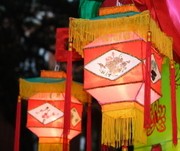Five reasons why you should do an Online TEFL Course
Cactus TEFL’s online English Language Awareness course is a great option for anyone about to embark on a TEFL course. The ideal CELTA and Trinity CertTESOL preparation course, it will give you solid, all-round knowledge of English grammar and save a lot of time when it comes to planning lessons.
If you don’t have time to take the course before you do your TEFL training, there are still plenty of reasons why it’s beneficial to complete it before you start your first teaching job:
1. Knowledge
There are certain countries where much of the English language teaching is based around conversation lessons, but the vast majority of TEFL jobs will involve as much emphasis on grammar as on conversation. Having a good working knowledge of the ins and outs of English grammar will help enormously when it comes to lesson planning – having to revise your grammar before you plan your lesson will add hours to your preparation!
2. Confidence
Making sure your English grammar is up to scratch before you step into the classroom will give you the confidence to deal with tricky grammar questions that students (particularly in high level classes) might have for you. You can avoid those embarrassing silences and any unnecessary stress when eager students quiz you on the differences between the past simple and the present perfect!
3. Reputation
Our ELA course was produced in conjunction with respected ELT teacher, teacher trainer and course book author, John Hughes. John is a highly influential figure within the TEFL industry, running ELT writing courses for Oxford University, consultation for language schools as well as his own popular ELT blogs and columns for The Guardian. The ELA course was also nominated for the British Council Innovation Award after it was launched, a wonderful and well-deserved accolade!
4. Employability
Doing the ELA course as a CELTA or Trinity CertTESOL preparation course, or prior to any other TEFL course, will look impressive on your CV and show that you are both keen and knowledgeable.
5. Value for Money
At just £95, ELA is great value for money. However, if you book your TEFL course through Cactus you will receive a discounted English Language Awareness course, at £50 reduced from £95 – plus a FREE English Language Methodology course.
Find out more about the English Language Awareness course and search TEFL courses worldwide with Cactus TEFL.








